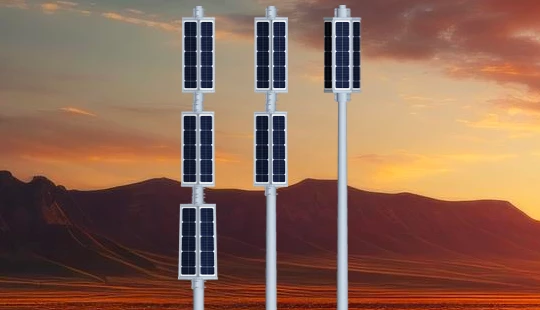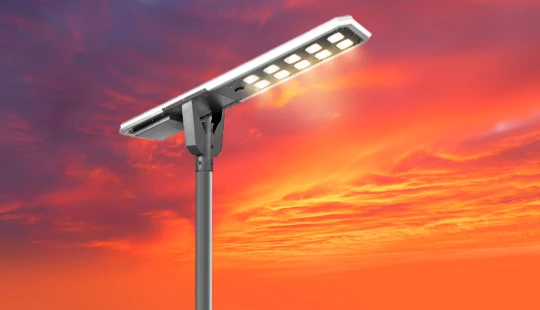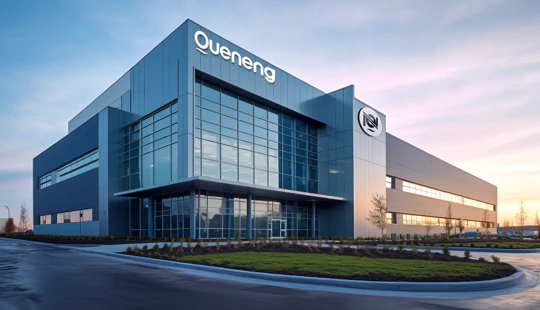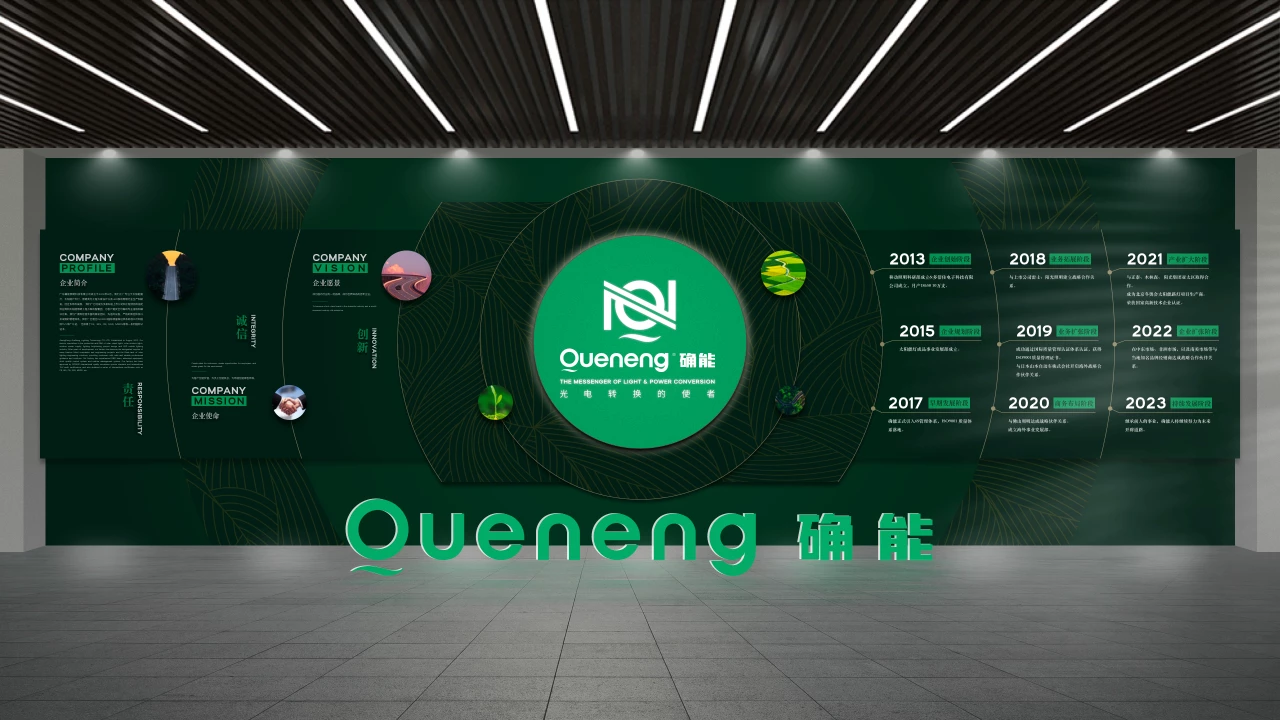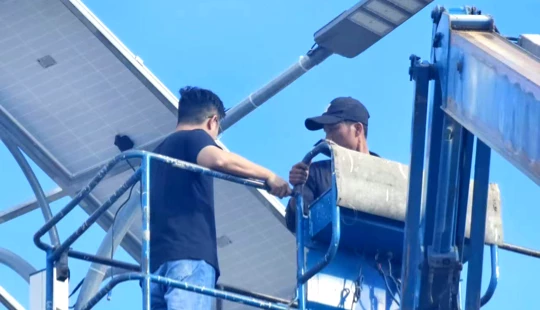OEM hospital solar lighting OEM | Quenenglighting Expert Guide
Navigating OEM Solar Lighting for Hospitals: Key Considerations for Your Next Purchase
Hospitals are pillars of community health, requiring uninterrupted, reliable operations 24/7. Integrating sustainable solutions like solar lighting offers not just environmental benefits but also enhances resilience against power outages and significantly reduces long-term operational costs. For procurement managers and facility planners considering OEM (Original Equipment Manufacturer) solar lighting for hospital environments, a deeper understanding of critical factors is essential for a successful re-purchase or expansion.
1. Ensuring Unwavering Reliability and Performance for Critical Hospital Operations
Reliability is paramount in a hospital setting. Solar lighting must provide consistent illumination, even in challenging weather or during grid failures. When considering OEM solutions, focus on:
- Advanced Battery Technology: Opt for high-quality Lithium Iron Phosphate (LiFePO4) batteries. These offer superior cycle life (often exceeding 6,000 cycles at 80% Depth of Discharge), enhanced safety, and stable performance across a wide temperature range compared to lead-acid alternatives.
- Intelligent Energy Management: Look for systems equipped with Maximum Power Point Tracking (MPPT) charge controllers and smart energy management algorithms. These optimize power harvest from solar panels and manage discharge rates, extending battery life and ensuring consistent light output throughout the night, even after consecutive cloudy days.
- High-Efficiency Components: High-efficiency monocrystalline solar panels (typically 20% efficiency or higher) and reputable LED chipsets (offering 150+ lumens per watt) ensure maximum light output with minimal energy consumption.
- Redundancy and Sizing: Proper system sizing, including sufficient battery backup (e.g., 3-5 days of autonomy), is crucial. For critical areas like emergency exits or pathway lighting around ERs, consider solutions with built-in redundancy or higher IP ratings (e.g., IP66/IP67) for enhanced durability.
2. Maximizing ROI and Economic Viability in Hospital Solar Deployments
While the initial investment in solar lighting might seem significant, the long-term ROI for hospitals is compelling:
- Reduced Operational Costs: Eliminating or significantly reducing electricity bills for outdoor and pathway lighting can lead to substantial savings over the system's lifespan. Payback periods for commercial solar lighting projects often range from 3 to 7 years, depending on energy costs and system specifics.
- Energy Independence and Resilience: Solar lighting provides a reliable light source independent of the grid, enhancing hospital safety and functionality during blackouts – a critical advantage that can be difficult to quantify purely in financial terms.
- Government Incentives and Rebates: Research local, state, and national incentives for renewable energy adoption. Many regions offer tax credits, grants, or accelerated depreciation schedules that can significantly offset initial capital expenditures, improving the overall economic viability.
- Long-Term Asset Value: Quality solar lighting systems, with solar panels warranted for 25+ years and LEDs for 50,000+ hours, represent a long-term asset that continues to provide value long after the initial investment is recouped.
3. Customization and Seamless Integration: Tailoring Solutions for Unique Hospital Needs
Hospitals have diverse lighting requirements, from parking lots and pathways to specific building perimeter illumination. OEM partners excel in providing tailored solutions:
- Specific Lumen Output and Distribution: OEM allows for precise lumen levels and light distribution patterns (e.g., Type II, Type III, Type IV) to meet specific illumination standards for different areas, ensuring patient and staff safety while minimizing light pollution.
- Aesthetic and Architectural Integration: Custom pole designs, fixture styles, and color temperatures (e.g., 3000K warm white for welcoming pathways, 5000K neutral white for security areas) can be matched to the hospital's existing architecture and branding.
- Smart Controls and BMS Integration: OEM solutions can integrate advanced features like motion sensors, dimming capabilities, and even compatibility with the hospital's Building Management System (BMS) for centralized control and energy optimization.
- Scalability: An OEM partner can design systems that are scalable, allowing for phased implementation or future expansion as the hospital's needs evolve.
4. Long-Term Maintenance and Operational Longevity of Hospital Solar Systems
While solar lighting systems are known for low maintenance, understanding their longevity and upkeep is crucial:
- Component Lifespan: High-quality solar panels have a performance warranty of 25 years or more. LED light engines typically last over 50,000 operating hours. LiFePO4 batteries are designed for 5-15 years, depending on usage and environmental conditions.
- Minimal Routine Maintenance: Beyond occasional cleaning of solar panels (especially in dusty environments) to maintain efficiency and visual checks for physical damage, robust solar lighting systems require minimal routine maintenance.
- Warranty and Support: A reputable OEM provider will offer comprehensive warranties on all components and provide clear guidance on maintenance schedules. Look for partners who offer post-installation support and readily available spare parts.
- Remote Monitoring (Optional): Some advanced OEM systems offer remote monitoring capabilities, allowing facility managers to track performance, identify potential issues, and optimize operations proactively.
5. Navigating Compliance and Safety Standards for Healthcare Lighting
Adherence to standards is non-negotiable for hospital infrastructure:
- Electrical Safety Standards: Ensure the OEM products comply with relevant electrical safety certifications such as CE, UL, RoHS, and others pertinent to your region. These confirm the products meet essential health, safety, and environmental protection standards.
- Ingress Protection (IP) Ratings: For outdoor lighting, high IP ratings (e.g., IP65 for dust-tight and water jet protection, or IP67 for temporary submersion) are vital to ensure durability and safety in various weather conditions.
- Photometric Standards: Lighting levels must meet local and national photometric standards for safety, security, and visibility in hospital environments (e.g., IESNA recommendations for outdoor areas).
- Flicker-Free Lighting: While more critical for indoor patient areas, ensuring stable, flicker-free light output is important for all lighting to prevent discomfort or interference with sensitive medical equipment.
Why Choose Quenenglighting for Your Hospital Solar Lighting Needs?
Quenenglighting stands as a premier OEM partner for hospitals seeking reliable, high-performance solar lighting solutions. Our strengths lie in:
- Unparalleled Engineering Expertise: We possess deep R&D capabilities, allowing us to design and manufacture bespoke solar lighting systems that meet the stringent requirements of healthcare facilities.
- Commitment to Quality: Utilizing only top-tier components – from high-efficiency solar panels and long-life LiFePO4 batteries to durable LED drivers and robust enclosures – ensures our products deliver superior reliability and longevity.
- Extensive Customization Options: From specific lumen outputs and beam angles to integrated smart controls and aesthetic considerations, we tailor every solution to seamlessly integrate with your hospital's unique infrastructure and operational demands.
- Rigorous Compliance Adherence: All Quenenglighting products meet international safety and performance standards (e.g., CE, UL, RoHS, IP ratings), providing peace of mind and ensuring regulatory compliance.
- Comprehensive Support: We offer end-to-end support, from initial consultation and design to manufacturing, quality control, and robust after-sales service, ensuring a smooth and successful deployment for your hospital's sustainable future.

Have more questions about our products or services?
The latest hot news you might like

Discover how solar panels power street lights, exploring the technology behind solar energy conversion, storage systems, and how solar-powered street lights are revolutionizing urban and rural lighting solutions.

Learn how AC Solar Hybrid Street Lights work, their advantages, disadvantages, system behavior in low-sunlight conditions, and why hybrid technology is ideal for regions with unstable sunlight.

Municipalities around the world are increasingly adopting solar-powered streetlights as part of their urban development strategies. Rising energy costs, the need for sustainable infrastructure, and government green initiatives are driving cities to switch from traditional street lighting to advanced LED solar streetlights.
Queneng Lighting provides municipalities with cost-effective, energy-efficient, and durable solar lighting solutions, ensuring safe and sustainable public spaces.
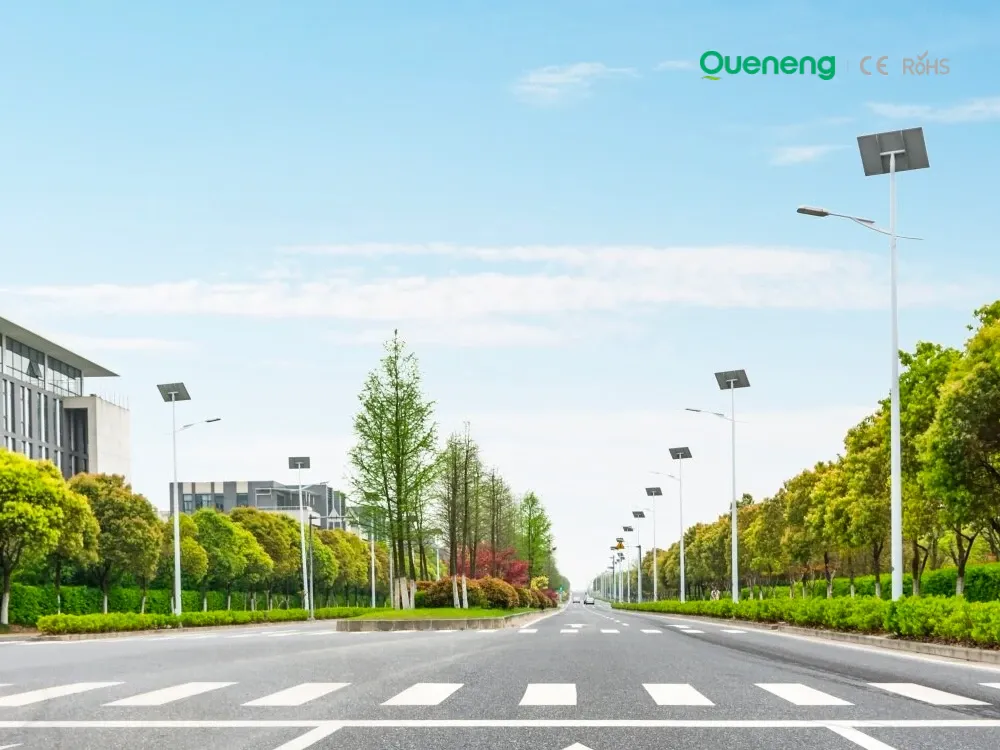
In recent years, the purchase of solar streetlights for municipalities has become a growing trend across the globe. Local governments are under pressure to reduce public expenditure, promote green energy, and create safer communities. Solar streetlights provide a reliable, cost-effective, and sustainable solution that meets these needs. Queneng Lighting, as a leading solar street lighting manufacturer, has supported multiple municipal projects worldwide with customized and energy-efficient solutions.
FAQ
Solar Street Light Luhao
Is the Luhao solar street light weatherproof?
Yes, the Luhao solar street light is designed to withstand all weather conditions. It is made with durable, weather-resistant materials that can handle rain, snow, heat, and cold, ensuring reliable performance year-round.
Batteries and the environment
How do used batteries pollute the environment?
Battery Performance and Testing
What are the battery safety test items?
2) Overcharge and over-discharge test
3) Withstand voltage test
4) Impact test
5) Vibration test
6) Heating test
7) Fire test
9) Temperature changing cycle test
10) Trickle charging test
11) Free drop test
12) Low pressure test
13) Forced discharge test
15) Electric hot plate test
17) Thermal shock test
19) Needle prick test
20) Extrusion test
21) Heavy object impact test
Solar Street Light Luqing
What are the main benefits of using Luqing solar street lights in urban areas?
In urban areas, Luqing solar street lights reduce dependency on the grid, cut down on electricity costs, and minimize environmental impact. They also offer easy installation, which reduces the need for extensive wiring and infrastructure changes.
Solar Street Light Luzhou
What is the brightness level of Luzhou solar street lights?
Luzhou solar street lights provide bright, high-quality illumination that is comparable to traditional street lighting. The LEDs used in these lights are designed to provide focused, powerful lighting that enhances visibility and safety in outdoor spaces.
Tourist Attractions and Resorts
Will solar lights stay on throughout the night?
Yes, solar lights are designed to stay on all night long, provided they are installed in areas that receive adequate sunlight during the day. The solar panels charge during daylight hours and power the lights after dark.


Queneng's Luzhou Solar Street Light provides sustainable, energy-efficient outdoor LED lighting. Powered by solar energy, it's a cost-effective and eco-friendly solution for illuminating streets and pathways. A reliable and durable LED solar street light.

Queneng’s Solar Street Lights are designed to provide reliable, energy-efficient lighting for streets, parks, and other outdoor spaces.

Queneng's Luxian Reliable Solar Street Light offers energy-saving LED lighting for outdoor use. This durable, solar-powered street light provides reliable illumination, reducing energy costs and environmental impact. A perfect solution for sustainable outdoor lighting.

The Solar Street Light offers an energy-efficient, eco-friendly solution for illuminating outdoor spaces.

Illuminate your outdoor spaces with the Solar Street Light, a cutting-edge solution combining advanced solar technology and energy-saving LED lighting.
If you would like more information about Queneng solar lighting solutions, please send us a message by filling out the form below. Our professional team will get back to you within 24 hours!
Rest assured that your privacy is important to us, and all information provided will be handled with the utmost confidentiality.
Schedule a Meeting

Book a date and time that is convenient for you and conduct the session in advance.
Have more questions about our products or services?

